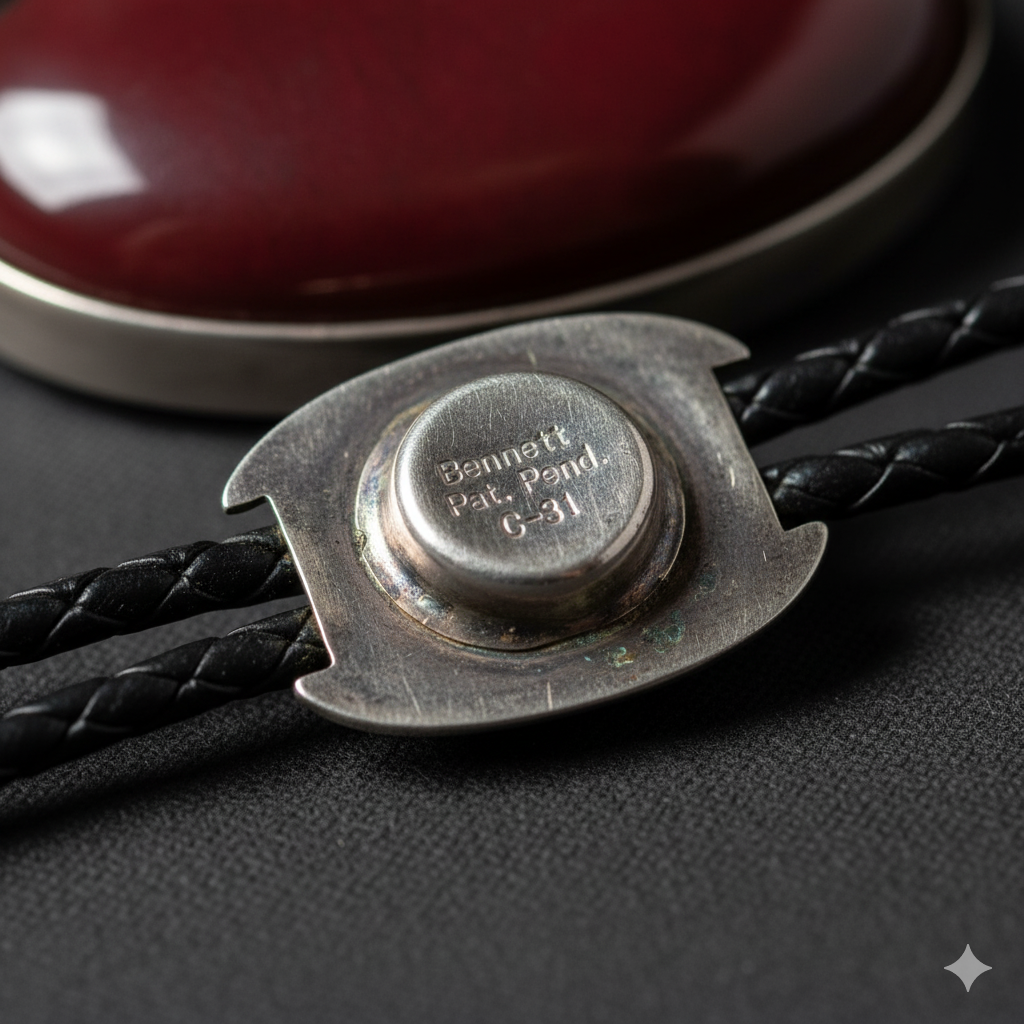
The Collector's Secret: A Deep Dive into the Bennett Clasp Timeline
Share
Ask any seasoned collector of Western wear what they look at first on a vintage bolo tie, and they won't point to the stone or the silverwork. They'll turn it over. The true story of a bolo tie—its age, its provenance, and often its quality—is hidden on the back, stamped into the small, ingenious mechanism that gives the piece its function: the clasp.
For decades, the undisputed gold standard of these mechanisms was the Bennett clasp. Invented by Victor Cedarstaff, an Arizona silversmith who patented his "slide for a necktie" in the 1950s, the Bennett clasp became synonymous with quality. Its evolution over the years has created a secret timeline, a Rosetta Stone that allows a knowledgeable collector to date a piece with remarkable accuracy. This guide will give you that knowledge.

The Timeline: Decoding the Markings
Understanding the subtle changes in the Bennett clasp's markings is the key to unlocking the history of a vintage piece.
The Pre-Bennett Era (Late 1940s - Mid-1950s): Simple Loops & Friction Clasps
Before the Bennett patent revolutionized the industry, artisans used simpler methods. These early bolo ties often feature simple loops of metal or basic friction clasps that grip the cord without any spring-loaded parts. Finding a piece with one of these primitive mechanisms is rare and signifies a true artifact from the dawn of the bolo tie's popularity.
The First Generation (Mid-1950s - Mid-1960s): The "C-31" Hallmark
This is the holy grail for many collectors of mid-century pieces. The very first widely produced Bennett clasps were stamped with "Bennett Pat. Pend. C-31". The "Pat. Pend." indicates the patent was still pending, and the "C-31" is a key identifier of this initial production run. When you find a bolo tie with this marking, you can be confident you are holding a genuine piece of early vintage history.

The Golden Age (Mid-1960s - Late 1980s): The "Pat. Pend." Standard
This is the clasp found on the majority of high-quality vintage bolo ties. Sometime in the mid-1960s, the "C-31" was removed from the stamping, though the "Bennett Pat. Pend." remained. This durable, reliable clasp was used for over two decades and is a definitive sign of a piece from the golden age of the bolo tie.
The Post-Patent Era (Late 1980s - Present): The Unmarked Bennett-Style Clasp
After the patent expired and Mr. Bennett passed away, the original dies were sold and the design was widely copied. These later clasps function similarly but bear no name. While perfectly functional, an unmarked Bennett-style clasp indicates a more modern piece, not a true vintage artifact.

Why It Matters: More Than Just a Clasp
This knowledge is more than just trivia. The type of clasp is a powerful indicator of the overall quality of a piece. In the 1950s and 60s, genuine Bennett clasps were a significant cost for an artisan. A silversmith who invested in a top-of-the-line clasp was highly unlikely to pair it with substandard silverwork or a low-grade stone. The clasp is therefore a proxy for the maker's commitment to quality.

Putting Knowledge into Practice
You are now equipped with a collector's secret. You can confidently evaluate a key marker of authenticity and age. The next step is to put this knowledge to the test. As you browse our Vintage Bolo Ties collection, look at the details in our product photos and descriptions. See if you can spot the markers of a true mid-century masterpiece.
For a complete overview of how the clasp fits in with the other components of a bolo tie, be sure to read our comprehensive guide to The Anatomy of a Bolo.
